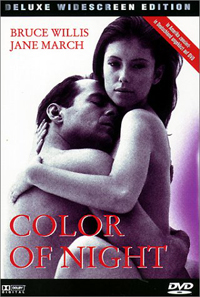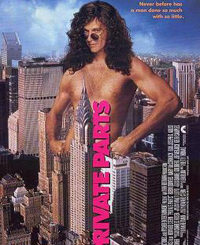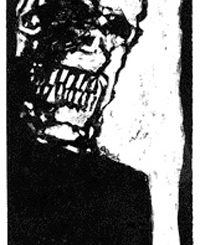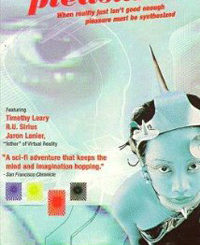 Cine-Trash
Cine-Trash
Color of Night (Richard Rush, 1994)
by William Ham
Even if you haven’t seen this pic, you’ll probably remember the controversy that surrounded it: the alleged full-frontal nudity of Bruce Willis that was said to be cut from the film (evidently, being married to Demi Moore had taught Brucie the real meaning of “exposure”). Well, forget it. This was just the same p.r. ploy used by studios whenever they put out (so to speak) a limp erotic thriller – you see more of Willis in Pulp Fiction than you do here, and besides, his sex scenes with Jane March in this movie are the least of the many reasons to see this much-pilloried flick.
The tone is set in the first scene. Kathleen Wilhoite, as a manic-depressive, slathers her face with bright red lipstick (a nice Lynchian touch), tearfully sticks a long-barreled revolver in her mouth… and blows it instead of her brains out. (I’ve heard about using sex as a weapon, but this is ridiculous.) She’s one of Willis’ psychiatric patients, and her leap from his window in the next scene causes one of the most unique traumas I’ve ever seen – that is to say, after her suicide, he can’t see the color red anymore. He seeks the aid of a therapist friend (Scott Bakula), who winds up murdered. (First Hudson Hawk, now this – the guy can’t get a break.) Reluctantly, Willis takes over his group-therapy sessions, hoping to ferret out clues to his pal’s quantum sleep. Then he meets a mysterious femme fatale, yadda yadda… who cares? Whodunnits mit schtupping are six for a nickel these days, but the critics who threw Color of Night in with the rest missed the point entirely. Consider the source: director Richard Rush’s previous film was The Stunt Man (1980), one of the coolest jokes ever put over on movie audiences, and this belated follow-up is just as sly. (Note the title’s acronym.) Willis and March underplay their roles, but everyone else (including Rush) has jokey bombast coming out of their pores. Ruben Blades takes his standard detective role and knocks it way into left field, every one of the neurotics in Willis’ group (including Lesley Ann Warren and Brad Dourif) overacts hilariously, and Rush fills the screen with visual incongruities, head-smacking Christ and phallic imagery, and an over-the-top tone that, in a perfect world, would make Joe Eszterhas hemorrhage and die. Oh yes, and there’s a six-minute-longer director’s cut available on video that apparently makes more sense than the theatrical/cable version, but who the hell wants that?



